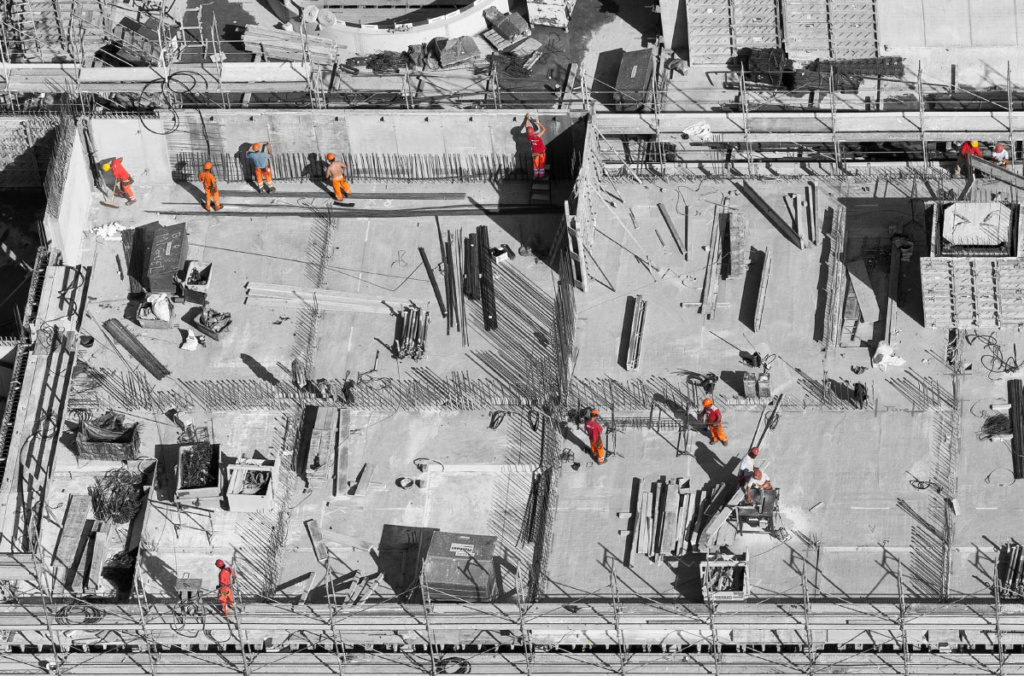Every year, thousands of people – an average of three per day – die from accidents on construction sites in the United States alone. One of the driving forces behind this trend is the paucity of safety inspectors. Now, some engineers are turning to tech to make the safety inspection process easier and more accessible, turning construction sites less deadly in the process.
This is what led Ardalan Khosrowpour to found OnSiteIQ in 2017. Khosrowpour has a background in engineering and says that as someone who had grown up around construction sites, he’d seen the negligence that exists in the industry.
“Construction is the second least digitized industry after agriculture, and as a civil engineer, I believe that our industry deserves better than this,” said Khosrowpour.
His program, usable from anywhere and on any device, allows anyone to remotely inspect a construction site using a technology-based documentation system, promising to cut down on the fatalities, injuries, and insurance costs.
Here’s how it works: the company has a network of data collectors, each armed with a 360-degree camera, to walk through an entire construction site twice monthly, recording all the while. This video is then uploaded onto the platform and gets automatically mapped onto the site’s floor plans using a built-in computer vision algorithm. The result is called a 3D “panograph” – a large, wraparound digital image created from these photos and video clips strung together.
Because all of the collected data is geolocalized and timestamped, users can pinpoint exactly when and where site conditions might be changing. An artificial intelligence system trained to highlight potential safety hazards expedites this process. This is all a far cry from the traditional, pen-and-paper methods used to document, inspect and assess the potential hazards on a construction site.
In short, it “enables any stakeholder from any location to virtually walk the site and do their own inspection,” says Khosrowpour.
This program also consolidates this data into easy-to-read graphs, allowing users to quickly track when, where, and how often a particular safety issue, like a missing guard rail, occurs. The program’s location-based technology also tracks where on-site the most safety issues are occurring. All of this together allows users to quickly assess and eliminate any potential safety risks, and any comments about a site can instantly be annotated, tracked, and shared among those that need to know.
Khosrowpour presented OnSiteIQ at the BuiltWorlds Project Conference this past week at Grand Central Tech in Manhattan. The conference was dedicated to discussing the emerging technologies meant to augment city planning and architecture.
OnSiteIQ was one of the finalists of the NYC Startup Challenge – a shark tank-style pitching session, where CEOs of five selected technology-based startups presented their projects to a panel of judges from the construction and urban planning fields. The winner would attend this year’s Builtworld Summit: a prime opportunity to drum up new clientele and reach potential investors.
Though the competition was close, OnSiteIQ ultimately came in second. While the judges liked the concept, their main concern was how this concept could evolve into a continuous and real-time monitoring system on the job sites. RoadBotics, an URBAN-X cohort member using phones to survey road conditions and AI to assess them, took home first place.
Since its inception, OnSiteIQ has collected over 3.7 million square feet of data using its twice-monthly data collection model. The program is available through a monthly subscription from the program’s website with three different tiers depending on the services required for a project. Depending on what a user needs, they can choose to focus on documentation and safety inspection alone, or they can add in risk-assessment technology.
